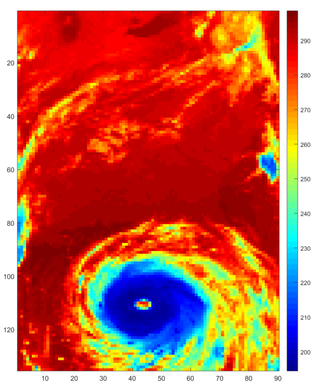NASA - EOS Aqua Mission logo.
Jan. 29, 2019
A new NASA study shows that warming of the tropical oceans due to climate change could lead to a substantial increase in the frequency of extreme rain storms by the end of the century.
Image above: An "anvil" storm cloud in the Midwestern U.S. Image Credit: UCAR.
The study team, led by Hartmut Aumann of NASA's Jet Propulsion Laboratory in Pasadena, California, combed through 15 years of data acquired by NASA's Atmospheric Infrared Sounder (AIRS) instrument over the tropical oceans to determine the relationship between the average sea surface temperature and the onset of severe storms.
They found that extreme storms — those producing at least 0.12 inches (3 millimeters) of rain per hour over a 16-mile (25-kilometer) area — formed when the sea surface temperature was higher than about 82 degrees Fahrenheit (28 degrees Celsius). They also found that, based on the data, 21 percent more storms form for every 1.8 degrees Fahrenheit (1 degree Celsius) that ocean surface temperatures rise.
"It is somewhat common sense that severe storms will increase in a warmer environment. Thunderstorms typically occur in the warmest season of the year," Aumann explained. "But our data provide the first quantitative estimate of how much they are likely to increase, at least for the tropical oceans."
Image above: A hurricane as seen by NASA's Atmospheric Infrared Sounder (AIRS) instrument. A hurricane is a large collection of extremely severe thunderstorms — seen here in dark blue. Each square pixel represents the measurements from a 10-by-10-mile (16-by-16-kilometer) area. At the time this image was taken, there were 140 of these extreme thunderstorms rotating about the eye of the hurricane. Image Credits: NASA/JPL-Caltech.
Currently accepted climate models project that with a steady increase of carbon dioxide in the atmosphere (1 percent per year), tropical ocean surface temperatures may rise by as much as 4.8 degrees Fahrenheit (2.7 degrees Celsius) by the end of the century. The study team concludes that if this were to happen, we could expect the frequency of extreme storms to increase by as much as 60 percent by that time.
EOS Aqua satellite. Image Credit: NASA
Although climate models aren't perfect, results like these can serve as a guideline for those looking to prepare for the potential effects a changing climate may have.
"Our results quantify and give a more visual meaning to the consequences of the predicted warming of the oceans," Aumann said. "More storms mean more flooding, more structure damage, more crop damage and so on, unless mitigating measures are implemented."
The peer-reviewed study was published in the December 2018 issue of the Geophysical Research Letters journal.
Aqua Satellite: https://www.nasa.gov/mission_pages/aqua/index.html
Climate: https://www.nasa.gov/subject/3127/climate
Images (mentioned), Text, Credits: NASA/Tony Greicius/JPL/Esprit Smith.
Greetings, Orbiter.ch




